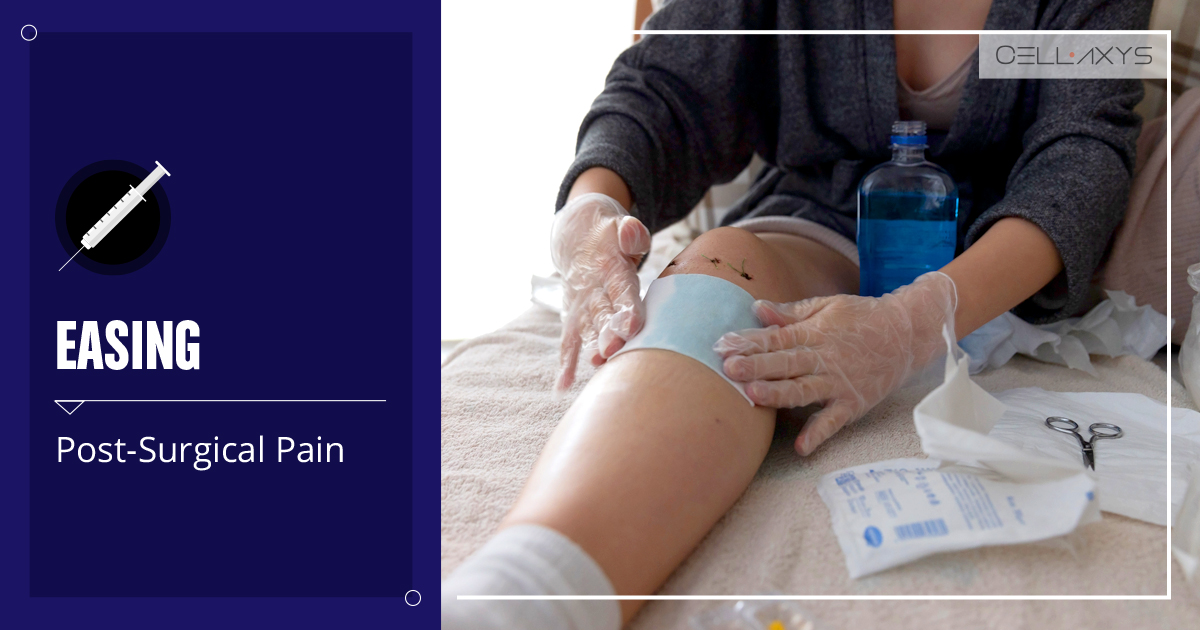Published on: February 23, 2024 | Updated on: March 3, 2024
Radiofrequency ablation is a minimally invasive treatment for certain tumors, neck and back pain, and different types of growth. The doctor doesn’t make many incisions during the procedure, yet, many patients report mild to intense pain afterward.
It’s normal to feel slight pain and discomfort in the first few weeks of the procedure. Some other common side effects of radiofrequency ablation include temporary burning, numbness, and pain.
However, worse pain, bleeding, or nerve damage can be problematic, indicating many complications like infections or wounds. If you have just got a radiofrequency ablation, you must know when to contact a professional doctor.
What Is Radiofrequency Ablation?
Radiofrequency ablation involves ultrasound imaging to identify the best area for radiofrequency probe insertion. Once the doctor finds the place, they insert the probe into the body close to the targeted nerves or growth.
The probe releases radiofrequency waves in the body to kill the surrounding cells. These dead tissues and cells are then removed from your immune system, resulting in the shrinkage of the growth. It may also stop the targeted nerves from sending pain signals.
Radiofrequency ablation is ideal for treating:
Radiofrequency ablation is an outpatient procedure, and the patient can go home after treatment. Depending on your condition, the doctor may or may not use general anesthesia during the procedure.
Common Radiofrequency Ablation Side Effects
While radiofrequency ablation is a common procedure, it does have some side effects, as with every chronic pain treatment. The process generally has low risks, causing the following side effects:
- Mild pain
- Temporary numbness or burning
- Temporary infection
However, some other complications can also occur in very rare cases:
- Severe pain
- Bleeding
- Nerve damage
- Paralysis
- Muscle weakness
- Motor deficits
- Allergic reaction to medications
If you observe any of the above side effects, you must contact a professional doctor as soon as possible. But working with a qualified healthcare provider can prevent them in the first place.
What Type of Pain is Normal After Radiofrequency Ablation?
Swelling, discomfort, swelling, soreness, and numbness are normal in the injected areas. It is not normal to experience severe pain after the procedure. Typically, it fades away with the right over-the-counter pain relievers like acetaminophen and ibuprofen within 1 to 2 weeks of the radiofrequency ablation.
Here are some reasons that may make your pain worse after radiofrequency ablation:
- Radiofrequency ablation performed in the neck or back can cause pain for at least 3 weeks. You can expect intense pain during this period. In most cases, the procedure does not completely treat the pain.
- The level of pain after ablation depends on why you underwent the procedure. For instance, temporary chest pain is common after getting radiofrequency ablation for Barrett’s esophagus.
- The standard recovery time after radiofrequency ablation varies from person to person. For the standard neck pain procedure, the recovery time is around two weeks. Meanwhile, the recovery time for liver tumor ablation is almost one week.
What to Expect After Radiofrequency Ablation?
Your doctor will ask you to give your body some rest for multiple days after radiofrequency ablation. They may also prescribe over-the-counter anti-inflammatory medicines for pain and swelling relief. You may also need to apply cold compresses to your surgical site.
To recover quicker, the doctor will also ask you to avoid bathing for a maximum of two days. You should also prevent lifting heavy machinery or lifting for a day.
The best way to speed up your recovery after radiofrequency ablation is to stay up-to-date about your condition with the doctor.
Factors Worsening the Pain After Radiofrequency Ablation
As discussed, mild pain after radiofrequency ablation is common, but serious side effects are rare and not normal. You’d need to contact a doctor if your medications don’t relieve the discomfort within two weeks or the pain worsens over time.
Some factors that may worsen the pain after radiofrequency ablation include the following:
Damage in the Nerve or Blood Vessels
The needle used in the procedure has only a slight chance of damaging your surrounding nerves or blood vessels. If you feel numbness or tingling around the injected area for more than two weeks, you may have nerve or blood vessel damage.
Hyperesthesia
Hyperesthesia refers to the high levels of skin sensitivity around the injected areas. In this condition, you will likely feel intense pain upon touching the surgical site. You may also feel pain when your hands feel too cold or hot.
Infection
Infection after radiofrequency ablation occurs in only rare cases. Here are some signs that indicate you may have an infection after the procedure:
- Redness and swelling in the surgical site
- Fever
- Chills
- Bleeding
- Nausea
- Vomiting
- Difficulty breathing
- Persistent pain
Pain After Radiofrequency Ablation: The Takeaway
If your pain after radiofrequency ablation persists, it doesn’t mean your procedure failed. Yes, this treatment method is specifically designed to treat pain, but it doesn’t eliminate it entirely.
Radiofrequency ablation is successful if your neck or back reduces by at least 50% after the procedure. However, many doctors are also fine with the 30% or two points reduction on the pain scale.
It’s also important to evaluate the improvements in the patient’s quality of life. So, if you still feel some pain but your activity and mobility are almost the same as before, the procedure is considered successful.
Remember, radiofrequency ablation isn’t a permanent neck or back pain solution. In fact, the pain is expected to return after 6 months or a year, depending on how quickly the nerves regrow. While you can again go for the procedure, it’s suggested to get a regenerative medicine treatment like cell-based therapies or platelet-rich plasma (PRP) therapy.
At CELLAXYS, our expert team of surgeons performs both procedures for neck and back pain with great care. Patients who have undergone any of these treatments report minimal pain and quick recovery from swelling or discomfort. Both PRP and cell-based therapies are performed as outpatient procedures, so you can go home within a few hours.
Book an appointment today to bid farewell to your neck and back pain for a long time!
Sources
Footnotes
- Ni Y, Mulier S, Miao Y, Michel L, Marchal G. A review of the general aspects of radiofrequency ablation. Abdominal imaging. 2005;30:381-400.
- Hurley RW, Adams MC, Barad M, Bhaskar A, Bhatia A, Chadwick A, Deer TR, Hah J, Hooten WM, Kissoon NR, Lee DW. Consensus practice guidelines on interventions for cervical spine (facet) joint pain from a multispecialty international working group. Pain Medicine. 2021;22(11):2443-524.
- Maldonado RJ, De Jesus O. Hyperesthesia. In: StatPearls. StatPearls Publishing, Treasure Island (FL); 2022. PMID: 33085272.
- McCormick ZL, Marshall B, Walker J, McCarthy R, Walega DR. Long-term function, pain and medication use outcomes of radiofrequency ablation for lumbar facet syndrome. International journal of anesthetics and anesthesiology. 2015;2(2).
References
- Thermal Ablation for Tumor Treatment. Radiological Society of North America, Inc. (RSNA). Accessed 8/29/2023.
- Radiofrequency Ablation. University of California San Francisco. Accessed 8/29/2023.
- Radiofrequency Ablation. John Hopkins Medicine. Accessed 8/29/2023.
- Radiofrequency Ablation (RFA): Procedure and Recovery. Spine-Health. Accessed 8/29/2023.
CELLAXYS does not offer Stem Cell Therapy as a cure for any medical condition. No statements or treatments presented by Cellaxys have been evaluated or approved by the Food and Drug Administration (FDA). This site contains no medical advice. All statements and opinions are provided for educational and informational purposes only.
Dr Pejman Bady
Author
Dr. Pejman Bady began his career over 20 years ago in Family/Emergency Medicine, working in fast-paced emergency departments in Nevada and Kansas. He has served the people of Las Vegas as a physician for over two decades. Throughout this time, he has been met with much acclaim and is now the head of Emergency Medical Services in Nye County, Nevada. More about the doctor on this page.
Dr Pouya Mohajer
Contributor
Pouya Mohajer, M.D. is the Director of Spine and Interventional Medicine for CELLAXYS: Age, Regenerative, and Interventional Medicine Centers. He has over 20 years of experience in pain management, perioperative medicine, and anesthesiology. Dr. Mohajer founded and is the Medical Director of Southern Nevada Pain Specialists and PRIMMED Clinics. He has dedicated his career to surgical innovation and scientific advancement. More about the doctor on this page.










